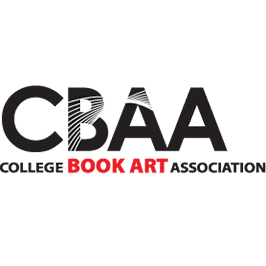Recently, I was thinking about reading, not only as the powerful privilege and action, but the interfaces in which we engage with this action. In his essay, Social Book Building, Amos Paul Kennedy, Jr., discusses an imminent future where we are “read to.” Kennedy refers specifically to the internet superhighway, alludes to the now-realized prevalence of “smart” devices seamlessly integrated into the fabric of our everyday lives, and discusses the potential threat those technologies present to literacy among the general public.
Literacy, for Kennedy, appears tied to the continued propagation and dissemination of physically tangible, textual objects — books or publications. His concerns for digital space, and its potential threat to society, lead me to reconsider Miller-Fusco’s Publish/Public and other related essays on the notion of “creating a public” through the action of publishing. These texts present a discussion negotiating the digital as an (invisible) public vs. the physical as a (visible) public: how they are created, what they represent, how they function in society, and how they can be or are effectively utilized given advancement in communication technologies.
As a new independent publisher interested in publishing as a critical artistic practice, two main sets of questions emerged:
1) How do we, can we, as publishers, conquer a/o harness the power of the “invisible” public? What problems exist within these new means that culture has so easily embraced?
2) What is a “visible” public? How is this unique today when held up against the “invisible”? And how can we better harness this public with our publication methodologies?
Moreover: What is it to publish for a digital (invisible) public? What does it mean to intentionally not publish for that public? Are there problems that exist in the invisible public that could be circumnavigated in the visible public? And who are these publics, really?
The initial public generated by independent publishers working analogue is small. Access to that public often requires great effort (and resources) at an imprint’s outset. The physical labor of creating and penetrating the visible as physical public is daunting, and often success hinges on the integration of tools offered by the digital in order to also access the invisible. In contrast, the digital offers ease of accessibility (read: download anywhere) to a potentially larger public with seemingly less physical labor; a publication has the potential to swiftly reach a larger audience. This open ease of accessibility is at the heart of the invisible, but what are the caveats, the drawbacks to being out there in this invisible space, or potential risks?
Is it a matter of surveillance? With the invisible comes complicit participation in contemporary means of gross data collection; every action is archived in a constantly refining digital algorithm. In the process is loss of anonymity as these very useful, effective, online platforms and interfaces get to know you, our invisible public, and us, as distributor. Such surveillance has been and remains under critical examination, constantly questioned, by a skeptical greater body public. So, while the digital platform presents as incredibly powerful and successful — esp. in terms of cultural urgency to disseminate — it also remains very visible and traceable despite its seemingly invisible means of operability. This is in direct opposition to my initial assertion of the digital as invisible. So we must reconsider “invisible” vs. “visible” when describing these modes of dissemination, for as terms, they possess contentious connotations.
Instead, it is a matter of volume — loudness vs. silence.
The digital as invisible is loud — very loud and very effective as it is very visible and accessible; facts that are both a blessing and a potential curse.
Given the state of our contemporary political climate, we could entertain a "doomsday" scenario (history being cyclical — why else are so many rereading 1984?): What role can/does an analogue means of publishing and distribution play in an age of gross data collection and surveillance? History, would answer resoundingly: “as the underground,” “the alternative,” a silent revolution.
While analogue publishing is loud in its own right primarily by way of its visible physicality, it is also comparatively much more silent. There is a time associated with its production that is inseparable from its action but in this time remains its potential power. This echoes personal tensions I have balancing urgency of content, time required for production, and a need for timely distribution.
This analogous mode of publishing is presented here as “silent distribution,” or a “silent platform of dissemination”— a tool wherein the information being disseminated is produced having never found or interacted with the WWW, a computer, or any other digital media (provided that the publisher has access to the proper obsolete technologies). Viable? Perhaps, but also radical despite it being historically old-hat. It is, in many ways, a return to independent publishing’s genesis.
This analogue mode of publishing and distribution could be — given our access to more effective, far-reaching, and efficient means — a powerful and radical consideration in this age of digital surveillance. What seems to be missing however, in order for it to be a truly successful endeavor or method of production as I have somewhat outlined here, is the ability to distribute the content wildly and widely without the assistance of previously noted contemporary digital media platforms.
The (analogue) has fallen out of mainstream fashion, and with it, postal distribution (think of the disappearance and significance of print journals and magazines, the costs associated with mail-order distribution, the threat to defund the USPS, etc.). But the postal service remains a potential ally, providing a sympathetic means of distribution, a silent distribution. It is a pre-existing, underutilized, not quite obsolete, but not in vogue infrastructure.
The challenge then is how do we, or could we, disseminate timely critical content, and do so quickly in this vein? How do you revive an analogous distribution network? Is it worth investigating? Is it madness, delusional, or simply paranoid to think of this analogous action of silent distribution as a viable activity and action?
I do not know, but certainly believe it is worth further consideration in our modern age.
Kennedy, Amos Paul, Jr., “Social Book Building,” Talking the Boundless Book: Art, Language, and Book Arts, ed. Charles Alexander (Minnesota: Minnesota Center for Book Arts, 1995), 49-50.
Miller, John and Maria Fusco, “Publish/Public,” Put About: A Critical Anthology on Independent Publishing, ed. Maria Fusco and Ian Hunt (London: Book Works, 2004), 149-154.





